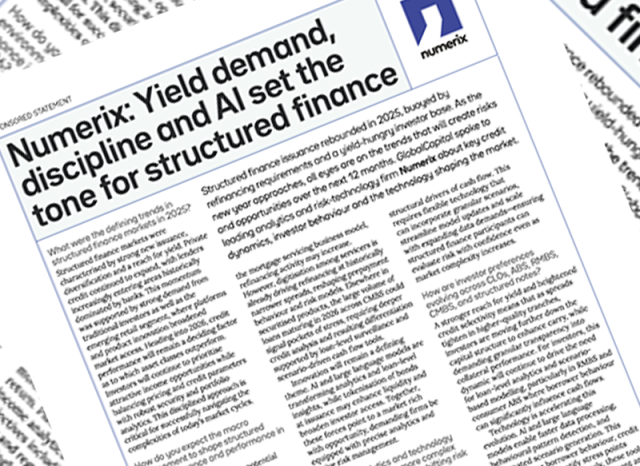The Evolution of Systematic Trading in Fixed Income Markets
The fixed income landscape has undergone a dramatic transformation over the past several years, with systematic trading strategies emerging as an important part of the market’s evolution. This shift represents not just a technological advancement, but a fundamental change in how institutional investors approach bond markets.
In a recent webinar, Greg Murray, Numerix’s SVP of Growth Marketing, sat down with Kevin McPartland of Crisil Coalition Greenwich for an interview exploring why and how systematic trading has grown in the fixed income markets and where it’s headed. Below we reveal key highlights of that insightful discussion.
Systematic Trading vs. Systematic Investing in Fixed Income
It’s important to differentiate systematic trading and systematic investing as two distinct approaches within fixed income markets. Systematic investing focuses on using computer models to make investment decisions—determining which bonds to buy, sell, or hold based on algorithmic analysis rather than traditional fundamental research. Systematic trading, on the other hand, uses automation and technology to execute those trading decisions. The integration of both approaches is becoming increasingly common, creating a comprehensive systematic framework that spans from investment decisions through to trade execution.
The Electronic Trading Revolution
The foundation for systematic trading growth lies in the remarkable expansion of electronic trading across fixed income markets. The statistics reported by Kevin in the session reveal a dramatic shift:
| Percentage of Notional Volume Traded Electronically | ||
|---|---|---|
| Market Segment | 2015 | 2025 |
| US Investment Grade | 20% | 48% |
| US High Yield | 6% | 32% |
| European Investment Grade | 46% | 63% |
| European High Yield | 22% | 44% |
| Municipal Bonds | 6% | 18% |
| US Treasuries | 42% | 56% |
These figures demonstrate how electronic infrastructure has created the data-rich and technologically advanced environment necessary for systematic strategies to flourish.
The ETF Catalyst
Fixed income ETFs have emerged as a critical catalyst enabling systematic trading in credit markets. Unlike corporate bonds, which historically lacked the liquidity that systematic traders rely on for trading and risk management, ETFs provide the liquidity and execution speed necessary for algorithmic strategies.
The ETF ecosystem offers several advantages for systematic traders:
- Liquidity: ETFs trade like equities, providing immediate access to credit exposure
- Risk Management: The create-redeem mechanism allows authorized participants to arbitrage between ETF shares and underlying bonds
- Price Discovery: ETFs often lead price discovery in volatile markets, providing real-time pricing signals
- Diversification: Broad index exposure reduces single-name concentration risk
Technology and Market Data Infrastructure
The growth of systematic trading depends heavily on robust market data and technology infrastructure. Electronic trading generates vast amounts of data, which in turn attracts more systematic participants, creating a positive feedback loop.
Key technological developments include:
Evaluated Pricing
Real-time evaluated pricing systems now update bond prices every few seconds, providing systematic traders with continuous market assessments even for bonds that rarely trade. These advanced models consider factors like liquidity premiums, holder composition, and issue size to generate sophisticated price estimates.
Execution Management SystemsSimilar to equity markets, fixed income is seeing the adoption of execution management systems that aggregate liquidity across multiple venues and execution types, enabling more efficient algorithmic execution.
Cross-Venue Analytics
Systematic traders increasingly analyze pricing differences across voice markets, electronic platforms, and anonymous trading venues to identify arbitrage opportunities and optimize execution strategies.
The Role of Artificial Intelligence (AI) and Machine Learning
While generative AI has captured recent headlines, machine learning has quietly powered systematic trading advancements for years. AI applications in fixed income include:
- Evaluated Pricing Models: Machine learning algorithms analyze multiple data points to generate real-time bond price estimates.
- Strategy Development and Testing: Huge volumes of data are analyzed by machine learning models to detect profitable trading patterns and fine-tune strategies.
- Portfolio Construction: Automated systems build and rebalance portfolios based on systematic criteria.
- Risk Management: AI-powered systems monitor and adjust risk exposures across complex portfolios.
- Code Generation: Generative AI accelerates algorithm development and testing.
Market Maturity and Future Outlook
Systematic trading is evolving as markets mature, with institutional investors increasingly adopting data-driven strategies for consistent performance. The expansion of electronic trading and algorithmic approaches is reshaping fixed income markets, particularly in areas like municipal bonds and emerging markets. Additionally, advancements in technology are facilitating better access to credit products, derivatives, and other alternative credit instruments. These trends highlight the industry's ongoing shift toward efficiency, transparency, and broader participation, paving the way for future innovations in systematic trading.
When asked to characterize the maturity of systematic fixed income trading, McPartland uses an apt metaphor: corporate bond markets are in their "teenage years" in terms of systematic trading adoption. This suggests significant room for growth and development.
Challenges and Considerations
The ongoing shift toward electronification is steadily drawing more categories of bonds into electronic trading. As infrastructure evolves, trading venues and technology platforms are continuously enhancing their capabilities. At the same time, regulatory frameworks are advancing to encourage greater transparency and support for electronic markets. This transformation is further accelerated by the influx of talent from the equity and FX sectors, whose systematic expertise is increasingly shaping the future of fixed income trading.
Despite the promising trajectory, systematic trading in fixed income faces ongoing challenges:
- Liquidity Constraints: Many bonds still trade infrequently, limiting systematic strategies.
- Market Fragmentation: Multiple execution venues and methods create complexity and fragmented liquidity
- Data Quality: Inconsistent or delayed market data can impact algorithmic performance.
- Regulatory Compliance: Evolving regulations require continuous adaptation.
The Path Forward
The systematic trading revolution in fixed income represents more than technological advancement—it's a fundamental shift toward more efficient, data-driven markets. As electronic trading infrastructure expands and technology continues evolving, systematic strategies will likely become increasingly central to fixed income market structure.
For market participants, the message is clear: systematic trading capabilities are transitioning from competitive advantage to market necessity. Organizations that invest in these capabilities now will be better positioned to navigate the evolving fixed income landscape.
Watch the full interview with Kevin McPartland here: How Systematic Trading Strategies are Reshaping Fixed Income | Numerix


